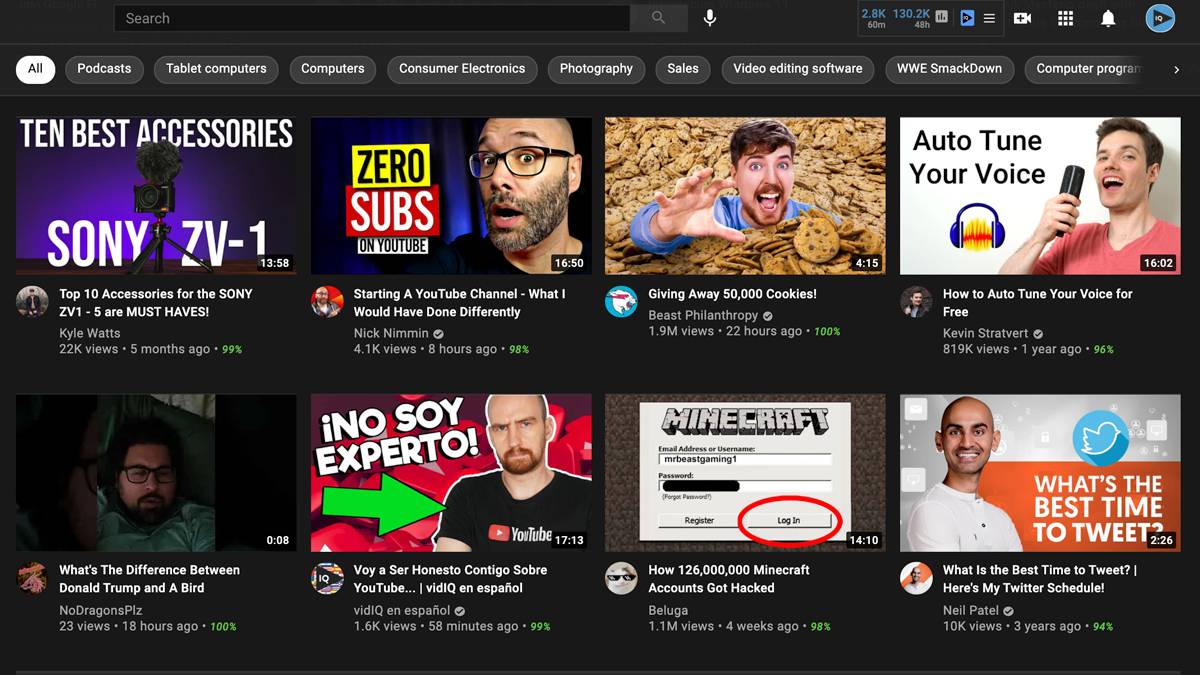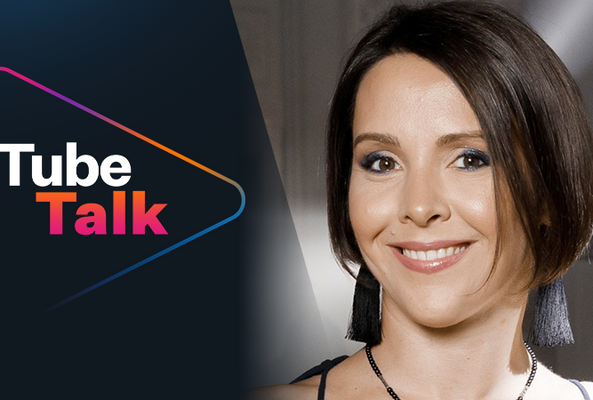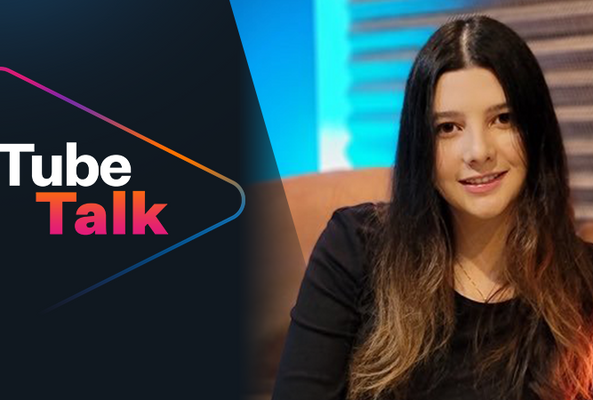Dan got his start on YouTube in August of 2011, recording gameplay videos as a fun hobby while attending school for video production. Joining the vidIQ team in 2020 allowed Dan to combine his hobby and professional talents to now help others grow their own YouTube channels.
6 Signs It's Time to Make YouTube Your Full-Time Job

JUMP TO SECTION:
- 1. You Have a Viable Plan to Make Money on YouTube
- 2. You Know Your YouTube Audience Well
- 3. You Don’t Ignore YouTube Analytics, Especially Audience Retention and Click-Through Rate
- 4. You Understand That Your YouTube Channel Is a Business
- 5. You Know How to Promote Your YouTube Channel
- 6. You Know How to Be Your Own Motivator
Is YouTube a real job? Can you make videos every day and maintain the responsibilities of adulting, like paying for rent, water, and electricity?
Yes, you absolutely can. If you want it to be, YouTube can become your full-time job. Thousands of creators have done just that by starting, growing, and monetizing their channels.
Read More: How to Monetize Your YouTube Channel - A Beginner's Guide
In this episode of TubeTalk, we chat with YouTube educator Ryan Walsh about when to go full-time on YouTube. On his channel of more than 20,000 subscribers, Walsh does more than show people how to grow on YouTube. He’s interested in coaching video superfans, people who want to make YouTube their one and only career.
Walsh is a full-time creator and has some opinions on who should attempt that journey. If you can identify with these six signs, you might be one of those daring, entrepreneurial creators.
1. You Have a Viable Plan to Make Money on YouTube
You need an income strategy to have a long YouTube career. In the beginning, your first income stream will probably come from advertising. When you reach 1,000 subscribers and 4,000 hours of Watch Time, you can apply to the YouTube Partner Program, which lets creators place ads on their videos. This can generate a nice chunk of change, but don’t expect to keep all the money. YouTube takes 45%, and of course, you have to pay taxes.
Read More: Google AdSense 101 - How to Benefit from Ad Revenue on YouTube
To support a full-time career, you need more than AdSense revenue. In fact, Walsh thinks creators shouldn’t even count it in their plan.
“AdSense, for most channels, is not a good idea,” Walsh says. “It’s really unpredictable. One month, you can make $2,000. The next month, you can make $500…. It’s a lot of stress because it’s all about the views at that point, and if you don’t get views, you’re not making that income anymore.”
Walsh plans to make money in three different ways: affiliate marketing, one-on-one coaching, and the occasional AdSense revenue.
2. You Know Your YouTube Audience Well
Understanding your target audience is everything on YouTube. It’s more important than how many subscribers you have or many videos you post. In fact, we’d argue that subscribers don’t matter on YouTube anymore. As long as you create content for the right viewers, you have a shot at growing your channel into a thriving, full-time business. Add some awesome thumbnails, titles, descriptions, and video cards into the mix, and you’re golden.
Read More: 13 Ways to Grow Your YouTube Channel Right Now!
YouTube will take care of the rest. Its video recommendation system is so sophisticated that viewers are always discovering new content. Just look at all the videos YouTube is recommending on our homepage:

“You don’t even have to be subscribed to a person,” Walsh says. “Their content is going to follow you, and that’s what really matters. The algorithm is smart enough to know what you’re watching.”
In other words, YouTube will find viewers for your videos. All you have to do is make videos for the right group of people within your niche.
3. You Don’t Ignore YouTube Analytics, Especially Audience Retention and Click-Through Rate
It’s so easy to overlook the boring stuff on YouTube. All those analytics about the health of your channel are great, but filming videos is more exciting, right?
We know, we know. But if you want to make money on YouTube full-time, you need to know which videos are bringing you the most clicks, revenue, and Watch Time.
Read More: Top 5 YouTube Metrics Every Creator Should Study
Without a doubt, click-through rate and audience retention are metrics you simply can’t ignore. They represent the foundation of getting more views and keeping people entertained with each video.
Your click-through rate is the percentage of people who click your video after seeing its thumbnail. The CTR formula is number of clicks / number of impressions x 100 = CTR.
Read More: Getting a Good Click-Through Rate on YouTube - 6 Powerful Tips
Most of the time, a high CTR means you’re convincing people to watch your videos, which is half the battle on YouTube.
Audience retention captures how many viewers are still watching a video throughout its beginning, middle, and end. The beginning of a video is most important. Viewers tend to click away in the first 30 seconds, and your audience retention data will show you the exact percentage.
Read More: How to Increase Audience Retention on Every YouTube Video
4. You Understand That Your YouTube Channel Is a Business
Thousands of people join YouTube to have fun and share their passions online. It’s a hobby that fulfills a deep, creative desire to make content for other people. To create a full-time YouTube career, you need that same passion. However, what makes you different from the casual creator is how you act on that passion. Casual creators don’t need a detailed strategy. You do.

“You’re creating a brand,” Walsh says. “You’re creating a business, in a sense, and you need to treat it like that. Because if you don’t, you’re probably not going full time anytime soon.”
Creating an online business requires some legal know-how. As you grow your channel, avoid these eight legal mistakes on YouTube. They’re super common and hard to recover from.
5. You Know How to Promote Your YouTube Channel
Every business needs to be promoted, and a YouTube channel is no different. Plenty of creators highlight their channel on Facebook, TikTok, Instagram, Twitch, and other platforms. Promoting your channel on social media is a good idea, but some creators move too fast. They don’t master the promotion tools within YouTube first, which is a huge mistake.
Once you gain more than 1,000 subscribers, YouTube gives you a Community Tab. It’s a mini social network for connecting with viewers and other creators. You can post GIFs, your latest videos, images, survey polls, and more.
Read More: YouTube Community Tab - The Underrated Growth Tool You NEED to Use
“I think surveys are extremely underutilized for a lot of YouTubers,” Walsh says. “Most of the creators in this space that I subscribe to, they use [the Community Tab] a lot. And honestly, that’s a really good idea. You can get an idea of what your audience really wants to see. You can ask them different questions.”
If you’re already doing this, keep it up. You understand that YouTube is essentially giving you everything you need to grow a channel, right down to the promotion.
6. You Know How to Be Your Own Motivator
Walsh says the hardest thing about being a full-time creator is the pressure. It becomes a heavy burden if you’re not ready for the responsibility. There’s pressure to generate enough income to support yourself. There’s pressure to post videos consistently. Almost everything you can imagine in a normal job – predictable income, daily structure, sociable coworkers – is hard to replicate as a YouTube creator.
“You’re kind of on your own…. You have to be your own motivator to keep yourself going,” Walsh says. “There is a ton that is different. It’s not for a lot of people.”
If you’re an independent, self-motivated person, going full-time on YouTube may be a good idea. You get to call the shots and scale your business to unimaginable heights.
Want more tips to start a YouTube career? Here are seven more ways to turn your passion into a business.



